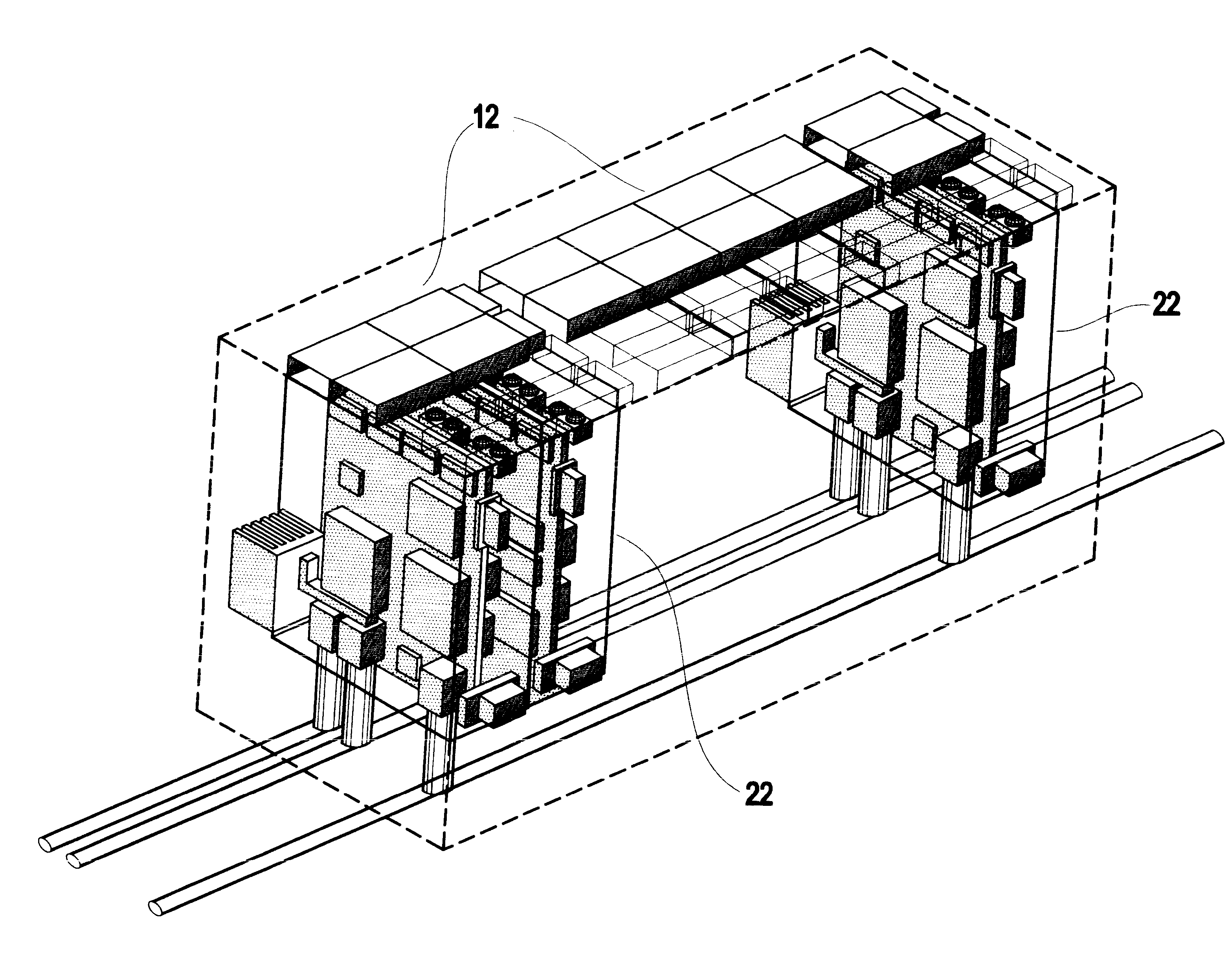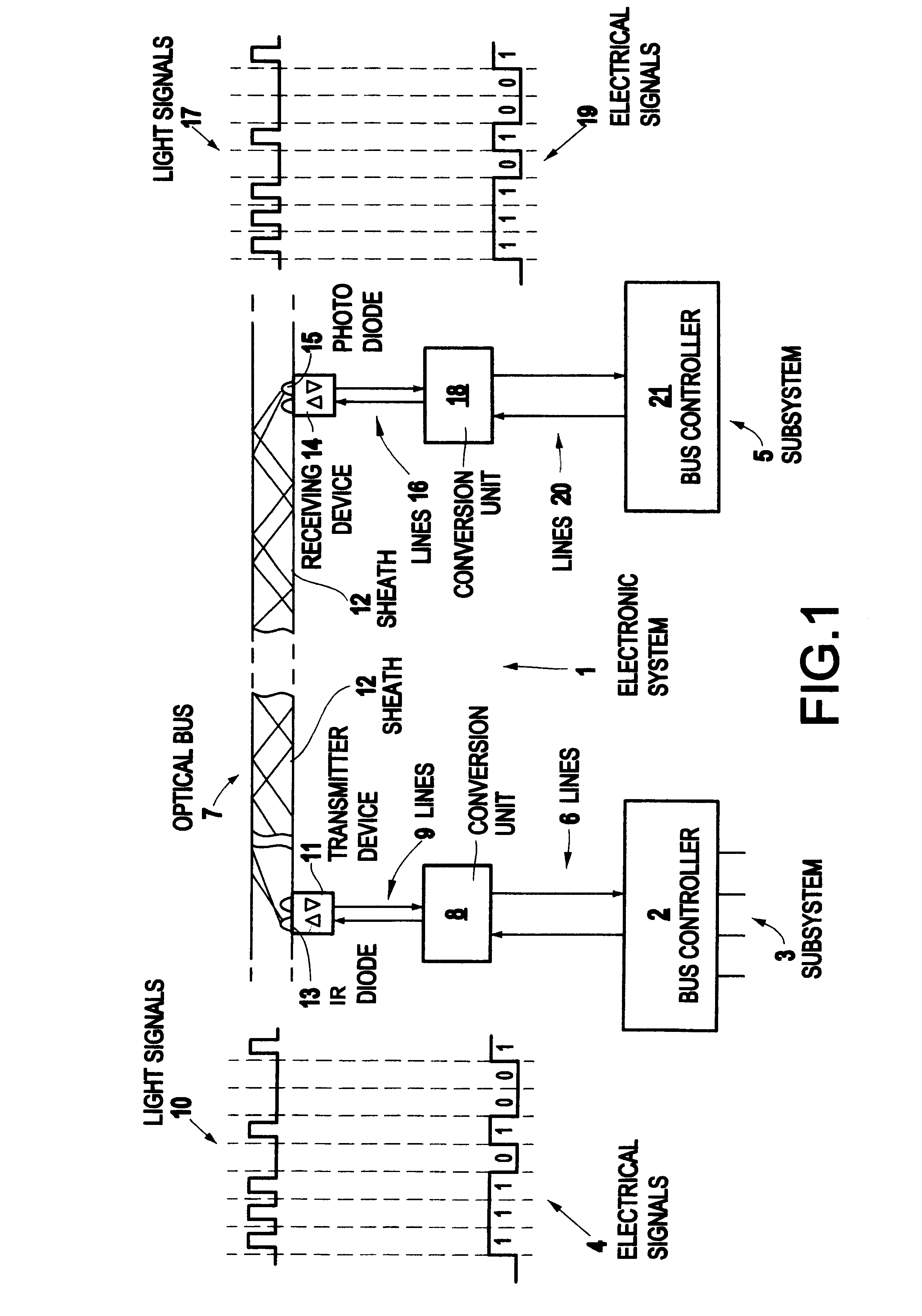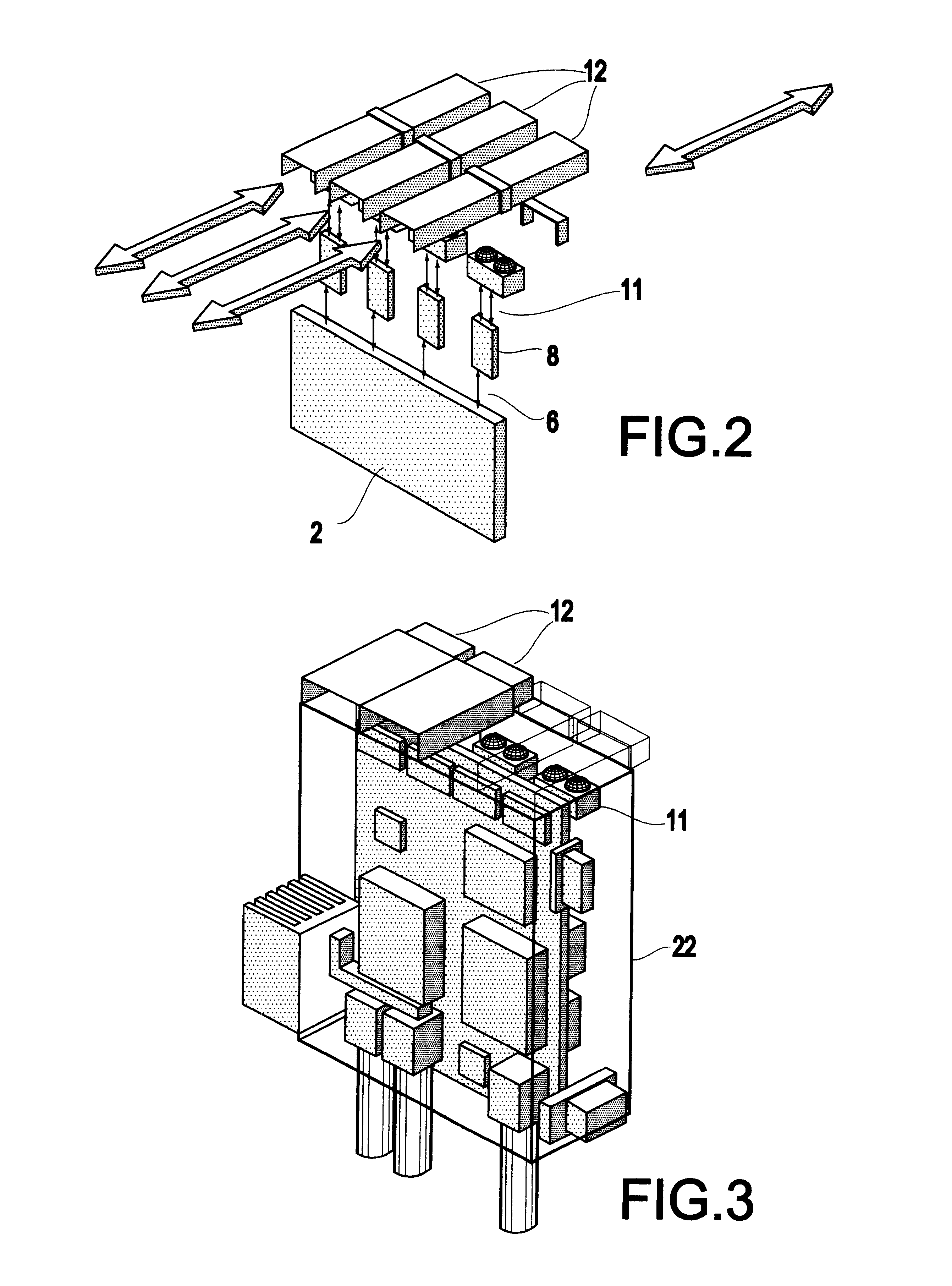Optical bus system and method
a technology of optical bus and optical transmission, applied in the direction of electromagnetic transmission, electrical equipment, transmission, etc., can solve the problems of increasing the cost of connectors for transmitting signals from one unit to another, increasing the space requirement, and increasing the cost of hard-wired bus systems
- Summary
- Abstract
- Description
- Claims
- Application Information
AI Technical Summary
Benefits of technology
Problems solved by technology
Method used
Image
Examples
Embodiment Construction
In the present example, the diffuse light used for optical transmission of the information consists of IR light. However, any other diffuse light can be used, e.g. diffuse laser light, electroluminescence etc. The use of light in the infrared wavelength range (for example 870 nm) as the transmission medium has the advantage that relatively cheap standard components, which are common in the consumer goods industry, such as IR diodes and possibly even photoresistors, can be used as transmitting or receiving devices. A simple transmission protocol is also available in the IrDA physical layer protocol. When using other transmitting and receiving devices, any other transmission protocol can naturally be used. A further advantage of the use of IR light consists in the fact that the system offers the best conditions for the creation of a "real-time system" due to the light transmission links separated from one another. This includes inter alia the fact that information which has a high pri...
PUM
 Login to View More
Login to View More Abstract
Description
Claims
Application Information
 Login to View More
Login to View More - R&D
- Intellectual Property
- Life Sciences
- Materials
- Tech Scout
- Unparalleled Data Quality
- Higher Quality Content
- 60% Fewer Hallucinations
Browse by: Latest US Patents, China's latest patents, Technical Efficacy Thesaurus, Application Domain, Technology Topic, Popular Technical Reports.
© 2025 PatSnap. All rights reserved.Legal|Privacy policy|Modern Slavery Act Transparency Statement|Sitemap|About US| Contact US: help@patsnap.com



